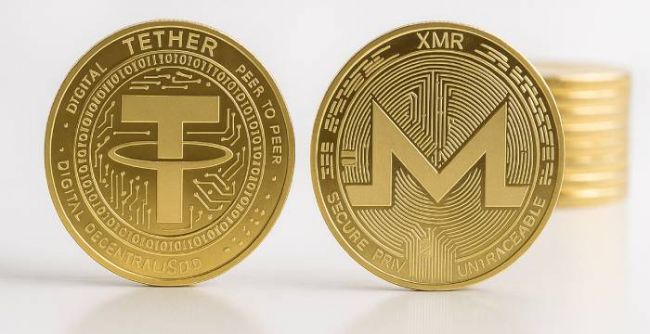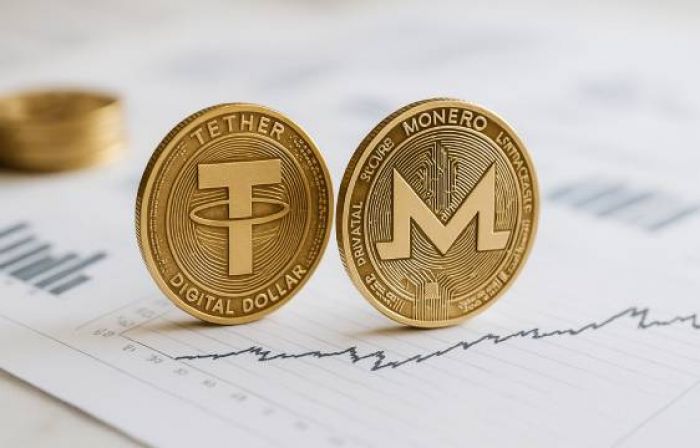Tips & Tricks
6 min read
Exchange USDT to Monero: From stablecoin to privacy coin


In the evolving landscape of cryptocurrency, users frequently seek ways to diversify their digital assets beyond mainstream options. Stablecoins offer price stability while privacy coins provide enhanced transaction confidentiality — representing two distinct philosophies in the crypto ecosystem. When you exchange USDT to Monero without hidden fees, you're transitioning from the stability-focused world of fiat-pegged tokens to the anonymity-prioritizing realm of privacy-centric digital currencies.

The cryptocurrency market features various token types, each designed with specific purposes and technologies. Understanding the fundamental differences between USDT and Monero helps investors make informed decisions about conversions between these assets.
USDT stands as the cryptocurrency market's predominant stablecoin, designed to maintain a consistent 1:1 value ratio with the US dollar. This stability comes from Tether Limited's reserve holdings, which theoretically back each USDT token with equivalent assets.
The primary appeal of USDT lies in its stability during market turbulence. When cryptocurrency markets face uncertainty, traders often convert volatile assets to USDT to preserve value without exiting the crypto ecosystem entirely.
USDT operates across multiple blockchain networks, including Ethereum, Tron, and Solana, enabling broad accessibility and integration with various crypto services.
Monero represents a fundamentally different approach to cryptocurrency, prioritizing privacy and fungibility above all else. Unlike Bitcoin and most other cryptocurrencies that maintain transparent public ledgers, Monero employs sophisticated cryptographic techniques to obscure transaction details by default.
The core privacy technologies behind Monero include ring signatures that obscure the sender, stealth addresses that generate one-time addresses for recipients, RingCT that hides transaction amounts, and Bulletproofs that verify transactions efficiently without revealing actual values.
For those exploring beyond stablecoins and privacy coins, blockchain-powered innovations like Alaya AI show how distributed technologies are also reshaping data, security, and decentralized systems.
These combined technologies ensure that Monero transactions remain private by default—the sender, recipient, and amount all remain confidential.
For investors exploring various cryptocurrency options beyond stablecoins and privacy coins, alternative assets like XRP offer different investment characteristics and use cases. More information on XRP investment strategies: according to XRP Investment Guide.
Converting between these two cryptocurrencies involves understanding the potential benefits and strategic considerations. Each serves distinct purposes within investment portfolios and offers unique advantages in different situations.
Converting USDT to Monero provides substantial privacy advantages that transparent stablecoins cannot match. While USDT transactions appear on public blockchains with visible wallet addresses and amounts, Monero shields this information from outside observers.
Financial surveillance represents a growing concern in the digital age. Blockchain analysis companies actively track cryptocurrency movements, creating detailed profiles of user behavior. Monero's privacy features effectively counter these surveillance capabilities.
Practical use cases for enhanced privacy include business transactions where financial details should remain confidential, personal wealth protection, and freedom from algorithmic profiling of financial behavior.
Beyond privacy concerns, exchanging USDT for Monero offers strategic portfolio advantages. Diversification across different cryptocurrency categories helps manage risk exposure and capitalize on varying market trends.
Regulatory considerations also influence this exchange decision. Stablecoins face intensifying scrutiny worldwide, with recent legislation establishing new oversight frameworks. Meanwhile, Monero's decentralized structure provides a different regulatory exposure profile.
The technological innovation behind Monero provides another compelling consideration. As privacy technology continues advancing, Monero's underlying protocols receive regular updates that potentially enhance both functionality and value.
The practical process of converting between these cryptocurrencies involves several steps and considerations. Understanding the available platforms and procedures helps ensure efficient and secure exchanges.
Selecting an appropriate exchange platform significantly impacts your USDT to Monero conversion experience. Exchange services broadly fall into three categories: centralized exchanges requiring account creation, decentralized exchanges operating without intermediaries, and instant swap services offering direct conversions without registration.
Key factors to evaluate when selecting an exchange include liquidity depth, geographic accessibility, verification requirements, fee structures, security infrastructure, and user interface simplicity.
Non-custodial exchanges generally provide stronger privacy protection since they don't hold your funds during the conversion process. According to Forbes, “exchanges that allow users to maintain control of their private keys offer enhanced security but may require more technical knowledge compared to traditional exchange platforms.”
Converting USDT to Monero follows a structured process regardless of your chosen platform:
Maintaining security during cryptocurrency exchanges requires attention to several important factors that protect both funds and privacy.
Security remains paramount when converting between cryptocurrencies. Verify all wallet addresses through multiple methods before initiating transactions. Even a single incorrect character in a Monero address will result in permanent fund loss.
Reliable exchanges provide transaction IDs and confirmation mechanisms. Document these identifiers immediately and verify that your transaction appears in the exchange's processing system.
Beware of phishing attempts targeting cryptocurrency users. Access exchange websites directly through bookmarked URLs rather than following links from emails or messages.
Achieving comprehensive transaction privacy requires additional measures beyond Monero's built-in protections. Network-level privacy represents a crucial consideration. Your internet service provider potentially monitors exchange website access, creating metadata that could compromise privacy.
As the Monero project website explains, "Using Monero responsibly requires considering your entire digital footprint, not just the blockchain transactions themselves."
Never publicly associate your identity with specific Monero transactions or wallet addresses, even in seemingly private communications. This information, once leaked, permanently compromises the privacy benefits.
The global crypto ecosystem is expanding fast—Statista projects nearly 963 million users by 2026, reflecting massive mainstream adoption.
The two categories will likely diverge further, offering traders distinct choices between transparent, regulated stability and confidential, decentralized sovereignty.
Exchanging USDT to Monero is not just a trade—it’s a strategic move between two very different crypto philosophies.
With regulatory changes on the horizon and user demand for confidentiality growing, understanding both asset classes equips you to navigate the future of digital finance. Those who diversify across stable and privacy coins position themselves to benefit from the best of both worlds.
Be the first to post comment!